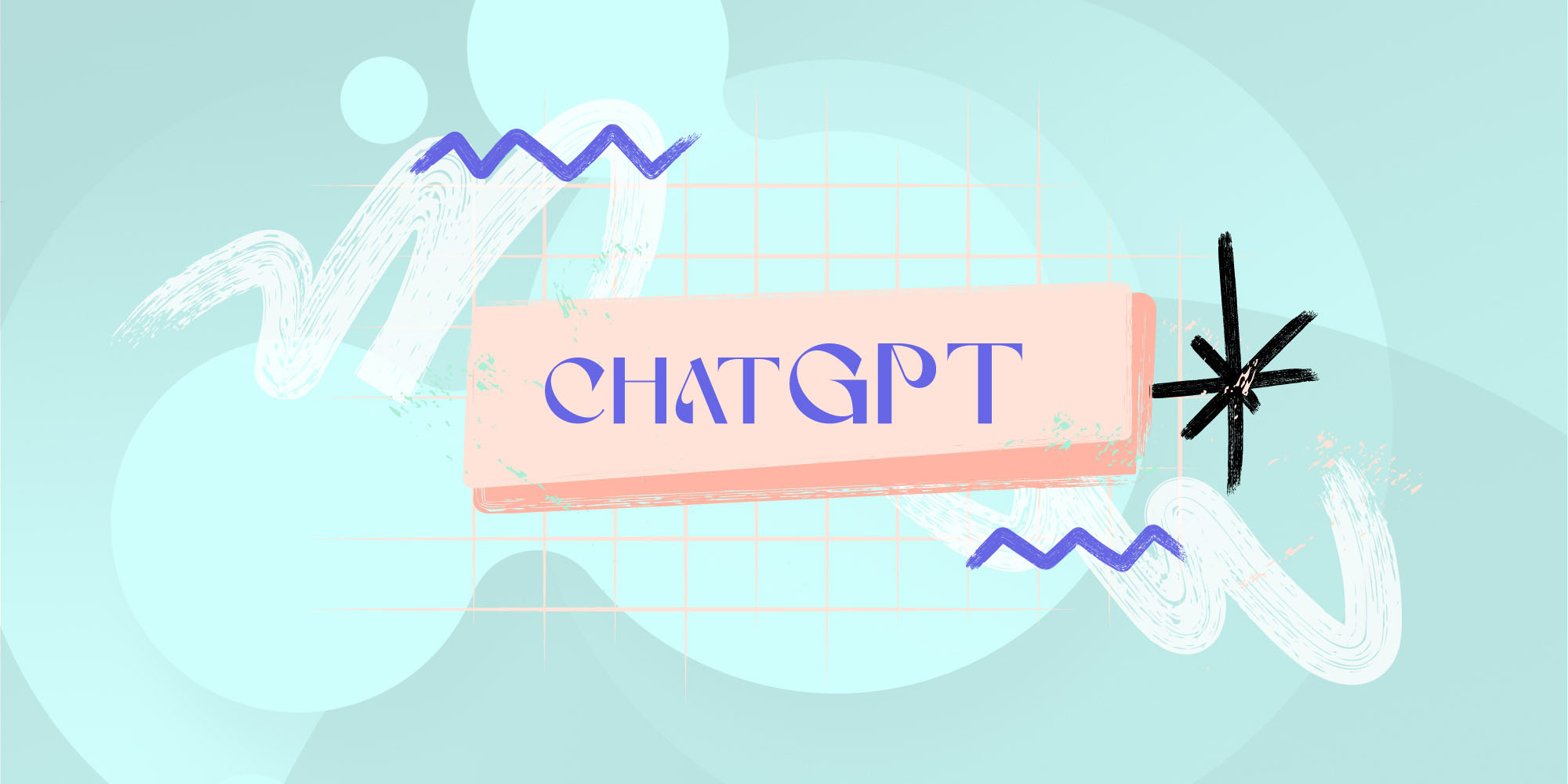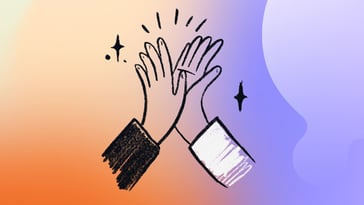Natural language processing (NLP) has advanced significantly in recent years. With the development of powerful models such as BERT and GPT, which are prime examples of large language models, we now have the capability to create sophisticated applications that can understand and interact with human language.
The comparison of BERT vs GPT highlights their distinct approaches to language understanding and generation, showcasing the diverse possibilities these models offer in the field of NLP.However, what went viral as a disruptive chatbot with ChatGPT, suddenly became a contest of language models to power AI content. So, we decided to oppose BERT vs GPT to understand their differences and similarities, explore their capabilities, and discuss some of the tools that use them.
Let's take a deep dive into natural language processing and the two most popular tools in the field.

What is BERT (Bidirectional Encoder Representations)?
BERT (Bidirectional Encoder Representations from Transformers) is another popular language model developed by Google AI. Unlike GPT-4, BERT is a bidirectional transformer model, which considers both left and right context when making predictions. This makes it better suited for sentiment analysis or natural language understanding (NLU) tasks.
BERT use cases
BERT serves as the base for a number of services, like:
- Google Search Engine.
- Huggingface Transformer Library.
- Microsoft Azure Cognitive Services.
- Google Natural Language API.
What is GPT (Generative Pre-trained Transformer) and what is GPT-4?
GPT (Generative Pre-trained Transformer), is a type of AI language model developed by OpenAI. It uses deep learning techniques to understand and generate human-like text based on input it receives. The model is pre-trained on vast amounts of text data, allowing it to predict and generate coherent sentences, making it capable of tasks like writing, answering questions, and engaging in conversations.
GPT-4 is the fourth iteration in the GPT series, representing a significant advancement in natural language processing. Compared to its predecessors, GPT-4 has enhanced language understanding, better contextual awareness, and improved ability to generate nuanced and accurate text. It's designed to handle more complex tasks and can produce more refined and contextually appropriate responses across various applications.

Examples of AI-writing tools based on GPT-4
Several AI content writing tools currently use GPT-4, such as:
1. ChatGPT by OpenAI
ChatGPT is a conversational AI tool that allows users to interact with GPT-4 in a chat-based format. It's designed to assist with a variety of tasks, from answering questions and providing explanations to generating creative content and offering writing assistance. It focuses on generating content quickly, but to make it sound truly human, a humanize AI tool can convert it to feel stylistically human. ChatGPT is versatile and user-friendly, making it a popular choice for both casual and professional users.
2. Jasper AI
Jasper AI, previously known as Jarvis, is a content creation tool that leverages GPT-4 to help users generate high-quality written content quickly. It's particularly popular among marketers, bloggers, and content creators, offering features like content templates, SEO optimization, and the ability to tailor content to different tones and styles. Jasper AI streamlines the writing process, making it easier to produce compelling articles, ads, and social media posts.
3. Copy.ai
Copy.ai is an AI-powered writing assistant that helps users create a wide range of marketing copy, including product descriptions, ad copy, email templates, and social media content. Based on GPT-4, Copy.ai is designed to be intuitive and easy to use, offering suggestions and templates that can be customized to fit specific needs. It's a valuable tool for businesses looking to enhance their marketing efforts with AI-generated content.
4. Writesonic
Writesonic is a content automation platform that uses GPT-4 to help users generate articles, blog posts, landing pages, and other types of written content. It offers a variety of templates and tools to optimize content for different platforms, making it a versatile option for content creators, digital marketers, and entrepreneurs. Writesonic aims to reduce the time and effort needed to produce high-quality, SEO-friendly content.
5. Rytr
Rytr is an AI writing tool that assists users in creating content across multiple categories, including blogs, emails, social media posts, and more. Powered by GPT-4, Rytr offers a simple and user-friendly interface with customizable templates and tone options. It's designed to help writers produce creative, engaging, and polished content with minimal effort, making it a popular choice for freelancers and small businesses.
6. Sudowrite
Sudowrite is an AI tool designed specifically for creative writers, leveraging GPT-4 to assist with brainstorming, writing, and editing stories, novels, and other creative projects. It offers features like "Describe," which helps generate vivid descriptions, and "Rewrite," which provides alternative phrasing for sentences or paragraphs. Sudowrite is tailored to fiction writers and those looking to enhance their creative writing process with AI support.

Bert vs GPT: Key differences
The most obvious difference between BERT and GPT-4 is their architecture. As mentioned above, GPT-4 is an autoregressive model, while BERT is bidirectional.
While the first considers the left context when making predictions, the second takes into account both left and right context. This makes BERT better suited for tasks such as sentiment analysis or NLU, where understanding the full context of a sentence or phrase is essential.
So, GPT-4 excels in language modeling for tasks like text generation, while BERT's pre-training method focuses on understanding natural language through masked language modeling.
Another difference between the two models lies in their training datasets. While both models were trained on large datasets of text data from sources like Wikipedia and books, GPT-4 was trained on 45TB of data, while BERT was trained on 3TB of data. So, GPT-4 has access to more information than BERT, which could give it an edge in specific tasks such as summarization or translation, where access to more data can be beneficial.
Finally, there are differences in terms of size as well. While both models are very large (GPT-4 has 1.5 billion parameters while BERT has 340 million parameters), GPT-4 is significantly larger than its predecessor due to its much more extensive training dataset size (470 times bigger than the one used to train BERT).

Bert vs GPT: Key similarities
Despite their differences in architecture and training datasets size, there are also some similarities between BERT and GPT-4:
-
They use the Transformer architecture to learn context from textual-based datasets using attention mechanisms.
-
They are unsupervised learning models (they don’t require labeled data for training).
-
They can perform various NLP tasks such as question answering, summarization, or translation with varying degrees of accuracy, depending on the task.
BERT vs GPT: Capabilities comparison
Both BERT and GPT-4 have been shown to perform well on various NLP tasks, including question answering, summarization, or translation, with varying degrees of accuracy depending on the task at hand.
However, due to its larger training dataset size, GPT-4 tends to outperform its predecessor in certain tasks, such as summarization or translation, where having access to more data can be beneficial.
On other tasks, such as sentiment analysis or NLU, BERT tends to do better due to its bidirectional nature, which allows it to take into account both left and right context when making predictions. In contrast, GPT -3 only considers left context when predicting words or phrases in a sentence.
Integration tips: How to combine BERT and GPT-4 in your projects
Combining BERT and GPT-4 can maximize the strengths of both models, resulting in more robust and versatile NLP solutions. Here’s how you can effectively integrate these two powerful tools into your projects:
-
Task specialization: Use BERT for tasks that require deep understanding of context and language nuances, such as sentiment analysis or question answering. Leverage GPT-4 for generating coherent and contextually rich text, such as in creative writing or content creation.
-
Pipeline approach: Implement a pipeline where BERT handles the initial understanding and interpretation of text, while GPT-4 generates or refines responses based on the insights from BERT. For example, a customer support system might use BERT to interpret a query and GPT-4 to generate a detailed response.
-
Complementary strengths: Employ BERT and GPT-4 in tandem to address different aspects of a single project. For instance, use BERT for analyzing user reviews to extract sentiment and GPT-4 to generate personalized recommendations based on that analysis.
Future trends: What’s next for BERT and GPT-4?
The future of NLP models like BERT and GPT-4 promises exciting advancements as researchers and developers continue to innovate and enhance these technologies.
Advancements in BERT:
-
Increased contextual understanding: Future iterations of BERT may focus on improving its ability to understand and process even more complex contexts and nuanced language.
-
Efficiency improvements: Efforts are likely to be made to reduce the computational resources required for training and deploying BERT, making it more accessible for various applications.
Developments for GPT-4:
-
Enhanced generative capabilities: GPT-4 and its successors will likely see improvements in generating more accurate, creative, and contextually appropriate content.
-
Cross-model integration: There may be more emphasis on integrating GPT-4 with other models like BERT to leverage their combined strengths, resulting in more powerful and versatile NLP solutions.
These trends indicate a future where NLP models become increasingly capable, efficient, and integrated, driving further advancements in AI-driven language applications.
Conclusion
The bottom line is that GPT-4 and BERT have proven themselves valuable tools for performing various NLP tasks with varying degrees of accuracy. However, due to their differences in architecture and training dataset size, each model is better suited for certain tasks than others.
For example, GPT-4 is better suited for summarization or translation, while BERT is more beneficial for sentiment analysis or NLU. Ultimately, the choice between the two models will depend on your specific needs and which task you are looking to accomplish.
Frequently Asked Questions (FAQs)
What is GPT-4?
GPT-4, or Generative Pre-trained Transformer 4, is a powerful autoregressive language model developed by OpenAI. It's designed to understand and generate human-like text based on the input it receives. GPT-4 can perform a wide range of tasks, from writing essays to answering questions, making it a versatile tool for many applications.
What is BERT?
BERT stands for Bidirectional Encoder Representations from Transformers, a model developed by Google. Unlike traditional models, BERT reads text in both directions (left-to-right and right-to-left) to understand context better. This bidirectional approach allows BERT to excel at tasks like answering questions and understanding the meaning of words in sentences.
How do GPT-4 and BERT differ in their approach to language understanding?
GPT-4 generates text by predicting the next word in a sequence, using a lot of data to produce coherent and contextually accurate sentences. BERT, on the other hand, focuses on understanding the context of each word by looking at the entire sentence from both directions. While GPT-4 is great for creating text, BERT excels at tasks requiring deep understanding of the text.
Which tasks are GPT-4 and BERT best suited for?
GPT-4 is best suited for tasks that involve generating text, such as writing articles, creating dialogue, or composing emails. BERT shines in tasks that require understanding the context of text, like answering questions, translating languages, and improving search engine results. Each model has its strengths, making them useful for different types of applications.
Can GPT-4 and BERT be used together?
Yes, GPT-4 and BERT can be used together to leverage their unique strengths. For example, BERT can be used to understand and interpret a user's query, while GPT-4 can generate a detailed and coherent response. Combining both models can create more powerful and accurate language-based applications.















